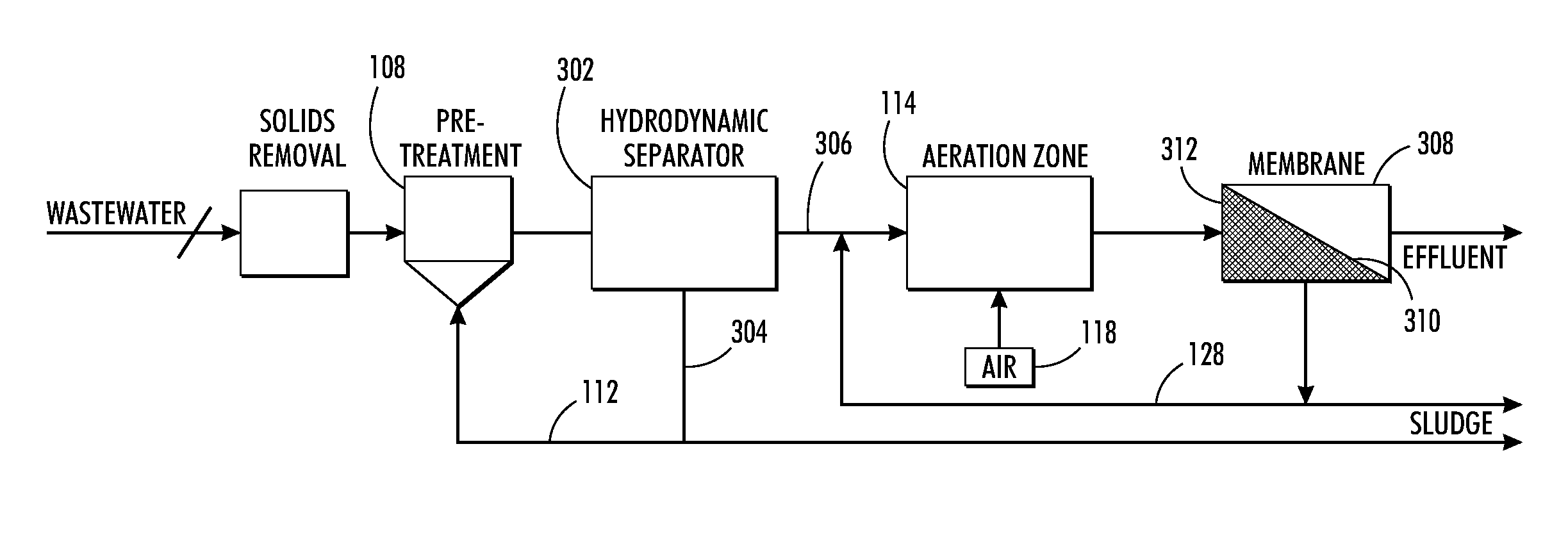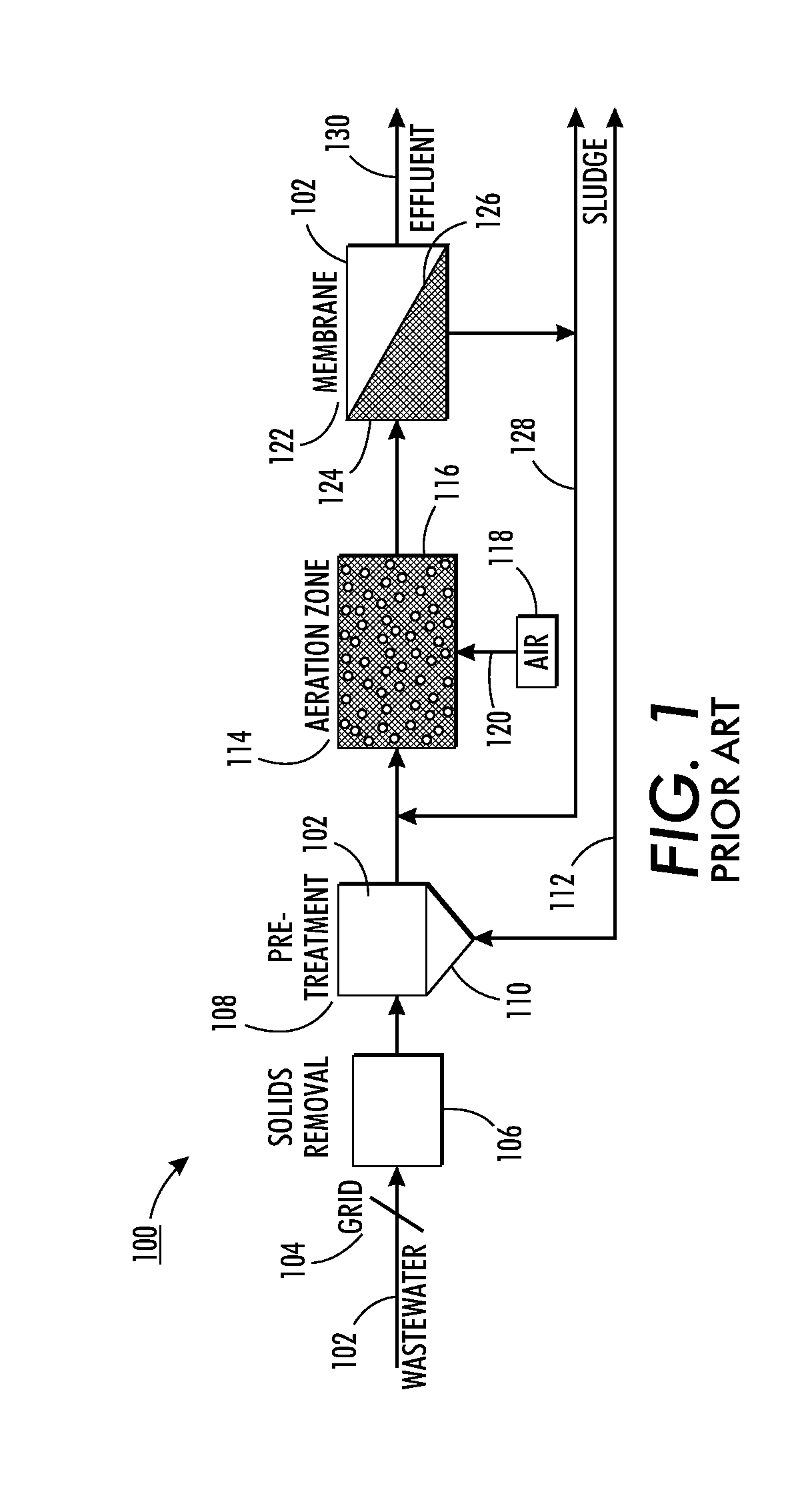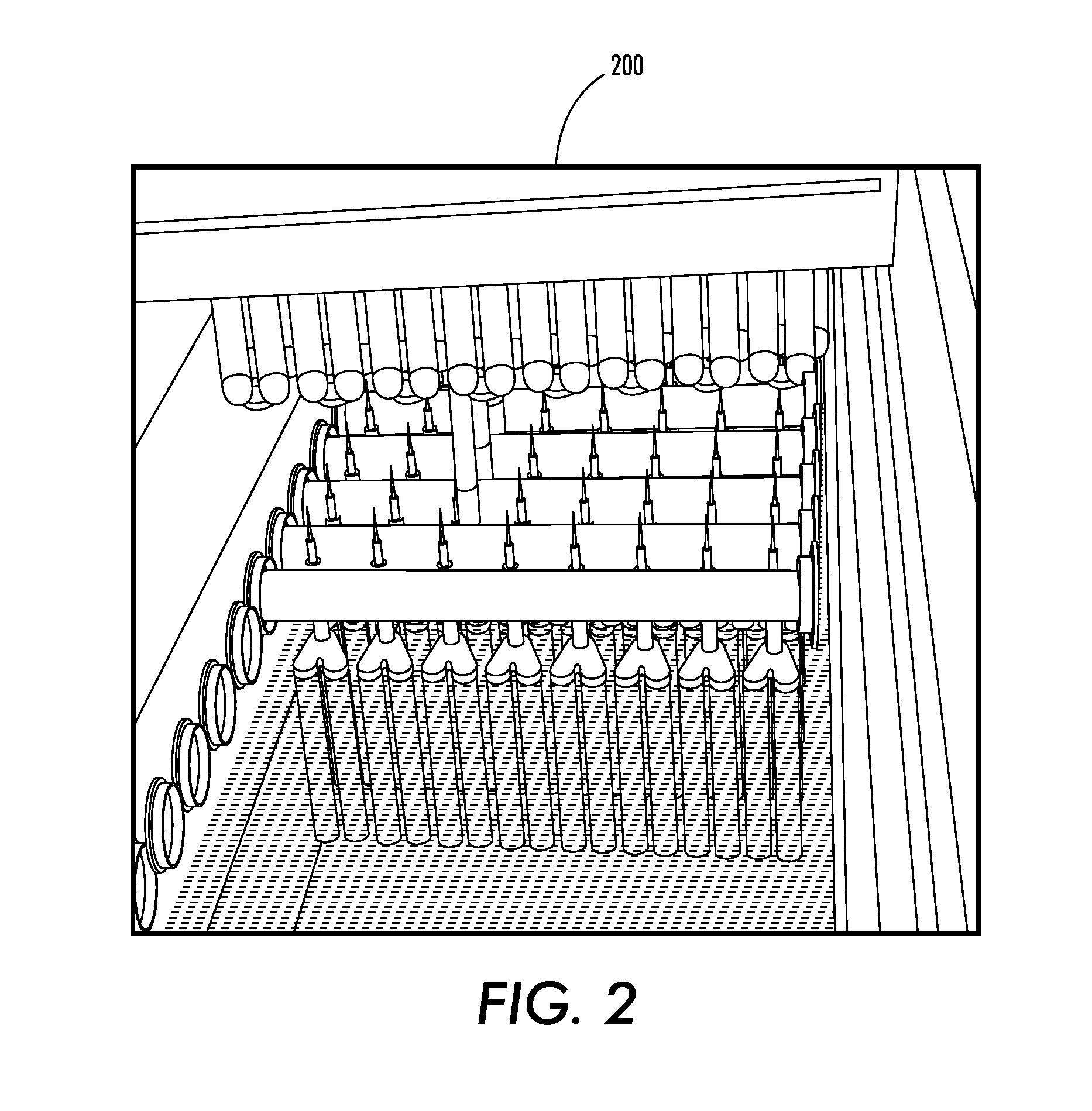Membrane bioreactor (MBR) and moving bed bioreactor (MBBR) configurations for wastewater treatment
a bioreactor and moving bed technology, applied in the field of wastewater treatment systems, can solve the problems of large amount of sludge, large area of land, and time-consuming asp systems
- Summary
- Abstract
- Description
- Claims
- Application Information
AI Technical Summary
Benefits of technology
Problems solved by technology
Method used
Image
Examples
Embodiment Construction
[0048]FIG. 1 illustrates a membrane bioreactor (MBR) source water treatment process system 100. The source water may, as mentioned, be water from a number of different locations and may contain algae and / or active sludge bacteria floc, among other elements. Source water containing active sludge biological floc should behave very similarly to algae-laden water, both having similar specific gravity. Such floc is often formed on filamentous bacteria, and floc size will decrease with increasing sludge age. Active sludge bacteria floc also posses the same risk of biofilm accumulation as that of water carrying algae, and range in size between 10-200 microns. Biological floc can be found in concentrations of 500-10000 mg / l (TSS). Granular sludge up to 1 mm can be formed under certain conditions and selected bacteria strains.
[0049]In system 100, source water 102 is supplied through a grid or screen 104. A solid removal module 106 processes the source water 102 in a known manner to remove la...
PUM
| Property | Measurement | Unit |
|---|---|---|
| sizes | aaaaa | aaaaa |
| size | aaaaa | aaaaa |
| concentrations | aaaaa | aaaaa |
Abstract
Description
Claims
Application Information
 Login to View More
Login to View More - R&D
- Intellectual Property
- Life Sciences
- Materials
- Tech Scout
- Unparalleled Data Quality
- Higher Quality Content
- 60% Fewer Hallucinations
Browse by: Latest US Patents, China's latest patents, Technical Efficacy Thesaurus, Application Domain, Technology Topic, Popular Technical Reports.
© 2025 PatSnap. All rights reserved.Legal|Privacy policy|Modern Slavery Act Transparency Statement|Sitemap|About US| Contact US: help@patsnap.com



